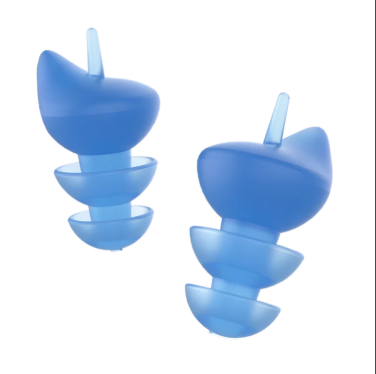A good night’s sleep is essential for physical health, mental clarity, and emotional well-being. But for many people, ambient noise—from traffic and snoring to noisy neighbours—makes restful sleep feel out of reach. That’s where earplugs for sleeping come in. They’re a simple, effective tool to block out noise and help you drift into deeper, undisturbed slumber.
When shopping for the best earplugs, you’ll find two primary types: foam ear plugs and silicone ear plugs. Both have their strengths, but which one is right for you? Let’s explore the differences and help you make the best choice for your sleeping habits and comfort level.
Understanding the Basics: What Makes a Good Sleep Earplug?
The ideal silicone ear plugs for sleeping should offer:
- Effective noise reduction
- Comfort for side sleeping
- Safe materials that won’t irritate the skin
- Secure fit without pressure
Both foam and silicone options can meet these criteria—but in different ways.
Foam Ear Plugs: Classic, Affordable, and Effective
Foam earplugs are made from soft, compressible polyurethane foam. They’re designed to be rolled into a tight cylinder before insertion. Once inside your ear canal, they expand to form a seal that blocks out sound.
Pros of Foam Ear Plugs
- Superior noise reduction: Foam plugs generally offer higher Noise Reduction Ratings (NRR), making them ideal for blocking snoring or loud city sounds.
- Budget-friendly: They’re inexpensive and sold in bulk, making them perfect for everyday use or travel.
- Soft and lightweight: When properly inserted, foam plugs are barely noticeable.
Cons of Foam Ear Plugs
- Single-use design: They can collect dirt and bacteria easily, and reusing them may cause ear infections.
- Fit can be tricky: Improper insertion reduces effectiveness.
- May not last all night: Some users find they loosen or fall out during sleep, especially if they move a lot.
Foam earplugs are best for heavy sleepers who want maximum noise reduction at a low cost.
Silicone Ear Plugs: Moldable Comfort and Reusability
Silicone earplugs are often made from moldable or pre-shaped silicone. Unlike foam, they don’t go into the ear canal. Instead, moldable silicone plugs are pressed over the ear opening to create a seal.
Pros of Silicone Ear Plugs
- Custom fit: Moldable silicone conforms to your ear’s shape, offering a snug, personalised fit.
- Reusable and durable: These can be cleaned and reused several times before needing replacement.
- Great for side sleepers: Because they don’t go deep into the canal, they’re less likely to cause pressure when your head is on a pillow.
- Water resistance: Moldable silicone is also great for blocking water, which is a bonus for swimmers and those prone to ear infections.
Cons of Silicone Ear Plugs
- Lower noise reduction: While still effective, silicone generally offers a lower NRR compared to foam.
- Can feel sticky or warm: Some users report discomfort from silicone in warmer climates or during long sleep sessions.
- Not ideal for very noisy environments: If you’re trying to block extremely loud noise (e.g., a snoring partner or nearby trains), they may fall short.
Silicone ear plugs for sleeping are great for people who prioritise comfort and a reusable, eco-friendly option.
Final Thoughts
Both foam ear plugs and silicone ear plugs offer excellent benefits for improving your sleep. The choice ultimately comes down to what matters most for you—maximum noise blockage or long-lasting comfort.
- Choose foam if you’re on a budget and need strong noise reduction.
- Choose silicone if you value comfort, reusability, and a custom fit—especially if you’re a side sleeper.
No matter your choice, integrating earplugs into your sleep routine could be the simple solution you need for deeper, more restful nights.




